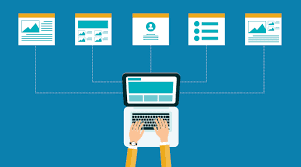Share
According to the World Health Organization (WHO), employee mental health conditions like depression and anxiety, cost the global economy a trillion dollars per year in lost productivity. WHO also states that for every dollar put into treatment for common mental illnesses, there is a return of four dollars in improved health and productivity.
Attention to the mental health and wellness of employees is crucial to employee retention, job satisfaction, productivity, and overall success. People want to work with happy coworkers and in a healthy environment. Companies looking to improve company culture must invest in employee mental health.
Here are 5 tips for supporting employee mental health in the workplace:
Implement a wellness program and mental health benefits
Company wellness programs are not a new concept. In recent years, the focus has shifted from physical health-centric to incorporating more mental health, balance, and overall well-being.
The pandemic pushed mental health to the forefront of business culture, opening the door for conversations about mental health challenges in the workplace.
In addition to societal advances in mental health perceptions, advances in technology have made it easier than ever for employers to provide employee mental health services through telemedicine. Many employers have added virtual counseling appointments to their health benefits package.
Companies can further support employee mental health and well-being through a wellness platform like Wellbeats. Instead of focusing on fitness alone, Wellbeats provides employees with a personalized regimen with the tools they need to live a healthier life. Participants can accomplish this through virtual mindfulness, nutrition, and movement classes.
Promote continual learning and development
Leaders and employees alike should strive for a growth-mindset and utilize continual learning. Lifelong learning can enhance self‐esteem, self‐efficacy, a sense of purpose and hope, competences, and social integration.
Providing your employees with a Learning Management System can further develop your workforce. Empower your employees through continuous learning to develop new skills and competencies. Two results of a successful continuous learning program are increased employee engagement and a more agile workforce.
The Society for Human Resource Management (SHRM) has partnered with Psych Hub to create the Mental Health Ally Certification. This certification accelerates the movement to remove mental health stigmas in the workplace and creates an inclusive company culture that focuses on complete employee wellness.
Provide sufficient PTO, leave, flexible schedules, and remote/hybrid work
To prioritize employee mental health and well-being, employees need sufficient time to recharge, attend appointments, and get the help they need.
When employees aren’t offered sufficient PTO, they must go unpaid to seek out the help they need. This only adds further stress to an already full plate. Financial stress can further exacerbate existing mental health conditions.
Additionally, offering paid parental leave can improve mental health among entire families, reduce rehospitalization rates of mothers by 51%, reduce domestic violence rates, and improve gender and racial equality. Offering this much needed benefit for employees with families can improve mental health across the board and increase your business’ recruitment and retention rates.
Allowing employees freedom for flexible work schedules can give employees a better work life balance and improve overall productivity. Furthermore, remote and hybrid work options can help your business win the war on talent. According to a survey from Mental Health America, 97% of people say that having a more flexible job would have a “huge” or “positive” impact on their quality of life.
Offer an Employee Assistance Program (EAP)
An Employee Assistance Program (EAP) is a tool designed to assist employees and their families with issues including:
- Mental health
- Substance abuse
- Relationship troubles
- Financial problems
- Legal issues
- Adoption assistance
- Childcare or eldercare
These employee-sponsored programs are delivered at no cost to employees and are completely confidential through a licensed third party. A dedicated EAP can provide a competitive advantage to employers looking to stand out in the job market and retain top talent.
Companies with Employee Assistance programs experience a decrease in employee sick days, work-related accidents, and workers’ comp claims. The U.S. Department of Labor reports that for every dollar invested in an EAP, employers generally save anywhere from $5 to $16.
Promote a healthy, balanced approach to performance metrics
According to LinkedIn, less than a third of U.S. employees enjoy the performance review process. Taking a people-centric approach to performance reviews can alleviate the stress related to the review process and shift employees’ mindsets towards continual personal growth and development.
Leaders can improve this process through continual feedback, manager education on best practices, setting SMART goals, and giving your team the tools and technologies to succeed. These small steps can a long way towards improving employee mental health.
Industry news & tips sent straight to your inbox!
Enter your email below to subscribe to industry news, product updates, and tips.
For more information on HR topics, read our HR blog and follow Netchex on social media—Facebook, LinkedIn, and Twitter.
Related articles

Seven Major Post-Election HR Implications for Businesses

HR’s Role in Driving Business Success and Growth

The Benefits and Must-Have Features of Employee Self-Service Portals

